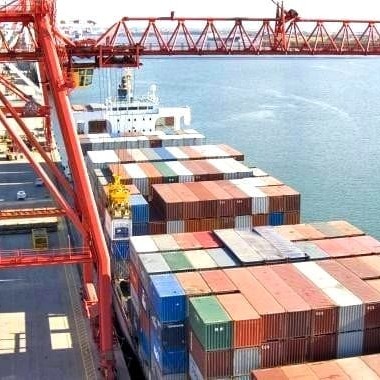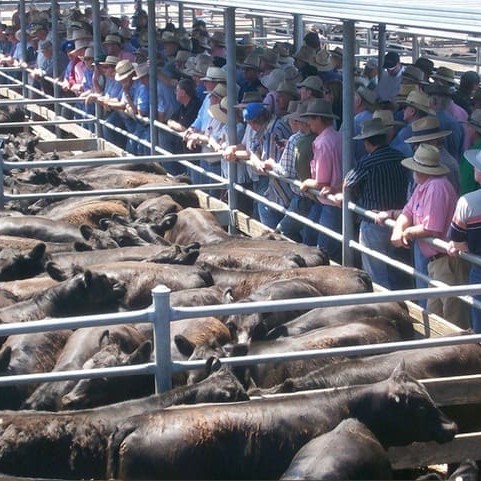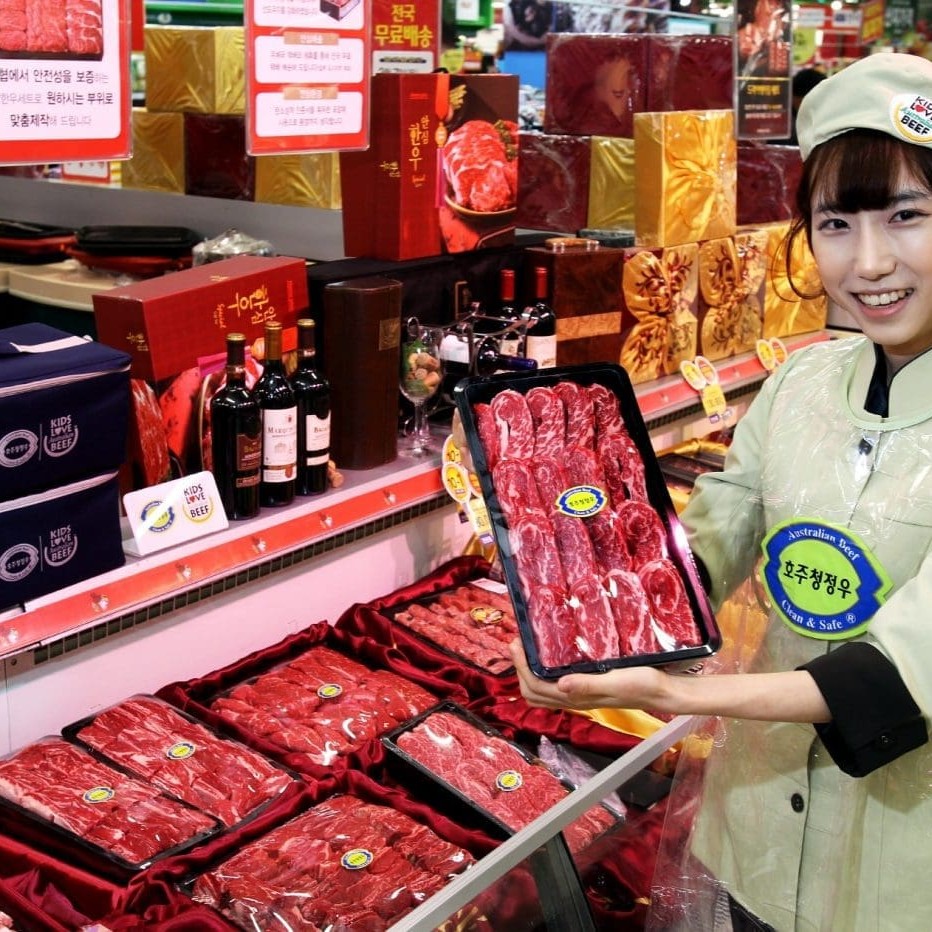The following is a summary of market and trade news items released this week by Meat & Livestock Australia
- Beef export value exceeds $5 billion
- More wheat and corn in 2013-14 – USDA
- Cattle indicators firm to slightly dearer
- Strong demand for Brazilian beef in Hong Kong
- Middle East trade continues to break records
- Korean demand for short ribs heightens
- Domestic feeder prices recover
2012-13 Australian beef export value exceeds $5 billion
15 August 2013
 Australian beef and veal export values during the 2012-13 fiscal year were up 8 percent year-on-year and 11pc on the five-year average, at $5.07 billion.
Australian beef and veal export values during the 2012-13 fiscal year were up 8 percent year-on-year and 11pc on the five-year average, at $5.07 billion.
It’s the second highest fiscal year value on record, with the highest set in 2008-09, according to Australian Bureau of Statistics records.
Boosting market value, total export volumes in 2012-13 (1.01 million tonnes) increased substantially, up 7pc year-on-year and 8pc on the five-year average. Equally encouragingly, the average price per tonne value improved marginally (1pc) from 2011-12 values, to $5002/t.
Export values to Japan were 7pc lower year-on-year, at $1.47 billion, and 18pc below the five-year average, underpinned by lower export volumes over the period, at 299,000t. Interestingly, the 2012-13 per tonne value to Japan increased slightly (1pc) on 2011-12, to average $4917/t.
US export values totalled $973 million for 2012-13, up 9pc year-on-year, assisted by the high 90CL prices and a slight rise (1pc) in the export volume for the year (207,000t). Underpinned by a higher overall export value and steady volumes, the average value to the US was $4709/t, up 8pc year-on-year.
The export value to Korea also improved during 2012-13, up 8pc year-on-year and 6pc on the five-year average, to $704m. Export volumes (138,000t) for 2012-13 rose 12pc year-on-year, however, the value decreased 4pc over the period, to average $5113/t.
With export volumes to China reaching 92,300 tonnes during 2012-13, more than ten-fold higher year-on-year, total market value increased 593pc, to $411m. The Middle East export value improved as well, up 45pc year-on-year, at $251m, underpinned by a 51pc increase in export volumes, to 47,912t.
More wheat and corn in 2013-14 – USDA
Global wheat supplies are projected to lift 3pc in 2013-14, to 880 million tonnes, according the US Department of Agriculture’s August World Agricultural Supply and Demand Estimates. This is 7.5mt higher than the July estimate, with higher production expected among some key exporters.
There are increases in production forecast across much of the globe, particularly across Europe, Ukraine, Kazakhstan, India and Canada, which suggests a record global wheat crop in 2013-14. Slightly lower production is expected in the US and South America.
The higher production is expected to be accounted for by greater consumption, especially in China, India and Iran, for both feed use and food.
Global corn production is projected by USDA to jump 11pc in 2013-14, to 957mt, slightly lower than the July forecast of 960mt. A large proportion of this increase in production is expected to come from the US, where yields are heading towards record levels, combined with the huge acreage planted.
Brazilian corn production is also forecast to grow this year, along with the EU and China. The US is expected to increase its usage of corn significantly, but total global usage is not expected to account for all of the growth in production, with stocks expected to lift 22pc, to 150mt. The forecast lower corn prices should put some downward pressure on costs for feed intensive livestock industries, especially for pork and poultry.
Cattle indicators firm to slightly dearer
 Despite throughput lifting nearly 10pc week-on-week, the majority of the eastern states cattle indicators increased, with price improvements ranging from 1¢ to 7¢/kg carcase weight.
Despite throughput lifting nearly 10pc week-on-week, the majority of the eastern states cattle indicators increased, with price improvements ranging from 1¢ to 7¢/kg carcase weight.
The trade steer indicator remained relatively steady this week, averaging 359¢/kg cwt, while medium steers recorded the largest increase, up 7¢/kg finishing on 315¢/kg. The heavy steer indicator improved a further 3¢ week-on-week, underpinned by increased processor interest, to average 333¢/kg. Medium cows remained steady, averaging 276¢/kg, up marginally on last week.
In contrast, the Eastern Young Cattle Indicator eased slightly (0.75¢) again this week, to average 323.5¢/kg, and while the EYCI has declined in recent weeks, it remains 5¢/kg higher than the same time last month. Along with the EYCI, feeder steers recorded a decrease this week, back 5¢, averaging 179¢/kg.
Strong demand for Brazilian beef in Hong Kong
Brazilian beef exports during July totalled 105,100t, up 20pc on the previous month and the highest volume since July 2007. Underpinning the boost in export was shipments to Hong Kong, which became the major destination for Brazilian beef during July, assisted by favourable currency movements.
The strong demand, combined with better prices (export price to Hong Kong averaged US$4.49/kg while for Russia averaged US$3.71/kg in July) helped to boost shipments to Hong Kong, with exports up 165pc year-on-year, to 24,000t. Brazilian exports to Russia remained stable at 22,940t.
Exports to Egypt remained steady year-on-year and registered a slightly increase of 2pc on the previous month, to 13,500t, followed by Venezuela, up 41pc, to 11,600t. Characteristic for this time of the year, largely due to the long National holiday in Chile, exports for the month rose 55pc, to 11,600t.
MENA continues to break records
Australian beef exports to the Middle East North Africa region reached record levels in July, totalling 7000tt, an increase of 12pc on the previous record set in May this year. Driving the growth was a large increase in shipments to Saudi Arabia, with exports totalling 4000t for July, an increase of 591pc when compared year-on-year, while shipments to Jordan (1,000t, up 252pc year-on-year) also contributed to the growth.
The surge in beef shipments to MENA must be viewed in the light of record Australian beef shipments in 2013. Beef exports to all destinations in the seven months to the end of July totalled 606,000t, 7pc above the previous high for the period, set in 2001. Shipments to MENA totalled 37,800t, meaning that 6.2pc of all Australian beef was destined for the region. This is up from 3.2pc in 2012, and 1.6pc in 2001, illustrating the growing importance of the MENA region as destination for Australian beef.
Importantly, MENA is not only an important destination for manufacturing beef (38pc of shipments in 2013), topside/inside (16pc) and carcase (10pc), but is a growing destination for loin exports. Exports of cube roll/rib eye roll, striploin and tenderloin have more than doubled in 2013, at 3300t. Shipments to the region now account for 9pc of all loin exports, up from 4pc in 2012.
The staggering growth in shipments has largely been fuelled by demand from Saudi Arabia, as importers turn to Australian beef after a ban was levelled on Brazilian beef in late 2012. Encouragingly, exports to countries outside of Saudi Arabia have remained strong in 2013, with year-to-July shipments to the UAE and Jordan, historically Australia’s large beef markets in the region, up 3pc and 6pc respectively. Strong growth to Kuwait (up 135pc) and Iran (up 581pc) has also been a feature of the market in 2013.
The challenge for Australian beef will be maintaining market share when Brazil is allowed back into Saudi Arabia (no date yet established), and Australian beef supply tightens. The recent expansion in the region will have allowed Australian beef to expand into markets where it previously had limited market share, allowing importers and customers alike to familiarise themselves with the product and establish supply chains.
Korean demand for short ribs heightens as Chuseok approaches
 While the imported beef trade in the Korean wholesale market was reportedly steady this week, imported short rib prices increased, assisted by heightened interest, low stock levels, and trader’s expectations of decreased supplies in Australia and the US.
While the imported beef trade in the Korean wholesale market was reportedly steady this week, imported short rib prices increased, assisted by heightened interest, low stock levels, and trader’s expectations of decreased supplies in Australia and the US.
Australian short rib prices this week reached KRW 12,000/kg – the highest price since mid-January 2011. Along with Australian product, US short rib prices this week reached the highest levels since October 2008. In contrast, on the back of increasing domestic supplies, Hanwoo wholesale carcase prices were down 12pc on last week, to KRW 11,194/kg.
With Chuseok approaching, the current demand for short ribs is strong in Korea, however, securing stock has reportedly been a struggle, due to the increased competition for Australian product with China and US product with Japan. In the lead up to Chuseok, Hanwoo promotions are proactively conducted across Korea, while MLA is working with major retailers to increase demand for Australian beef.
Domestic feeder prices recover
Domestic feeder steer prices have improved in recent weeks, with the reported tightening supply of suitable lines placing upward pressure on prices.
Domestic steers (280kg-300kg) hit a low of 174¢/kg mid-way through May, however, prices have improved, averaging 188¢/kg, at the end of last week. Domestic heifers (280-300kg) followed a similar trend, with prices dipping to 159¢/kg in May, before recovering to an average of 168¢/kg last week.
Reports suggest prices have improved due to the lack of supply in southern states, with suitable cattle hard to source, which isn’t uncommon at this time of year. Through Queensland, feedlots reportedly remain full, and there are large lines unsuitable to feed, due to weight specifications or breed composition. Despite feeder buyers becoming more active through saleyards in recent months, saleyard prices have remained relatively steady.
